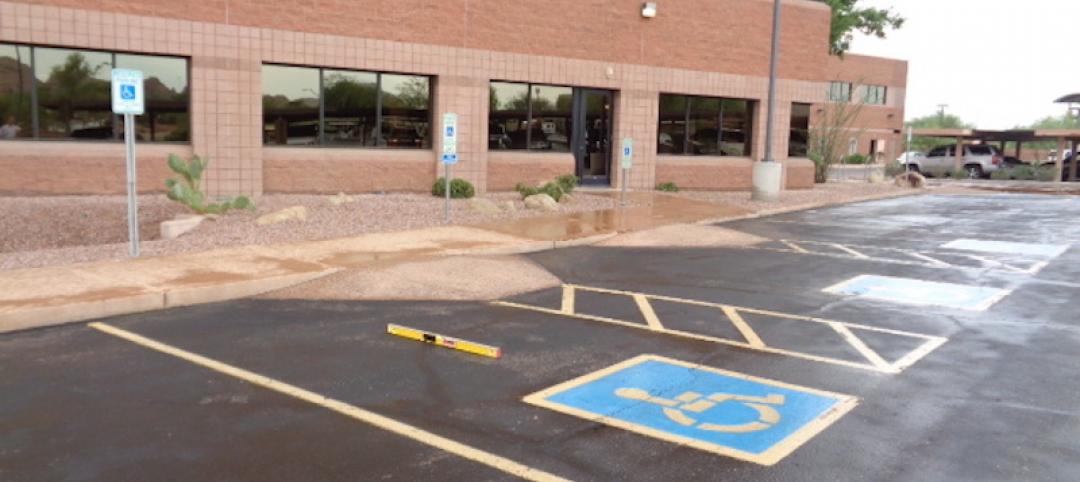Renovating and upgrading an existing hotel is all about time and budget. It’s essential to plan ahead for the inherent challenges—and costs—this work can pose. Is your project complicated enough to warrant closure during renovations?
In most cases, renovations do not require a complete shutdown of the property. But you may need to phase the work out by stack or on a floor-by-floor basis while staying in operation. Is the property an older building that needs to be brought up to current standards? How quickly do renovations need to be completed in order to make the numbers work? It’s imperative to address the existing and unknown cost issues inherent to renovating without negatively impacting the budget, work schedule, or, above all, hotel guests.
In any scenario, there are risks inherent to nearly all hotel renovations projects. Whatever the approach to renovation, it’s critical that the following risks be thoroughly assessed and proactively addressed.
Renovation risk #1: Working with an improperly defined scope
Improperly defined or insufficient project scopes notoriously produce uncertainty, confusion, delays, and cost overruns. However, because of the nature of renovations versus new construction, it is particularly important that potential issues that might derail the project are addressed effectively and strategically. This requires proactive project management and planning.
An effective project manager will foresee and respond to potential issues prior to construction – and carefully monitor the project as it moves forward – to ensure that it is completed according to specified quality, allocated resources, schedule, and budget. Otherwise, if management isn’t vigilant, the project will almost always drift from its intended parameters.
Cost Control Strategies:
• Early on in pre-construction, conduct an analysis to uncover various aspects of the project that require special considerations or attention, so that last minute reaction is not needed in the field. For example, before demolishing walls, understand the location of potential shafts, risers, and other special construction within the structure. Neglecting to perform such analyses, can negatively impact the scope by placing undue pressure on manpower and resources, and add weeks or months to the schedule
• Create a fully defined scope by incorporating results from these analyses and all other pertinent details including schedule and budget
• Once the scope is defined, meet with all stakeholders (owner, operator, brand, etc.) to mutually agree on all details of the scope including addressing any existing conditions upfront
• A model room should be used to investigate any constructability issues with the proposed renovation. However, the model will only reflect one unit type, and it is critical to understand that there will be multiple room configurations within the total renovation.
Renovation risk #2: Underestimating the schedule and/or manpower
Time is money, not only in terms of getting the property back into full operational order, but also getting the project team to finish the job within budget. However, a rushed schedule is never in anyone’s best interests and can create a myriad of issues that result in either poor quality, undesired results, or work that must be redone if it’s incorrectly or shoddily performed.
In addition, shortages of skilled laborers still loom in many cities, especially in more heated markets. For this reason, a schedule that’s too aggressive could be unrealistic in certain areas.
Cost Control Strategies:
• For larger renovations, explore the feasibility of breaking down the project into smaller parts and splitting up the work so that different labor pools can be engaged. For example, for a hotel with two large towers that need full renovations, two separate general contractors could be hired that that would draw labor from different subcontractor pools.
• Proactively address labor requirements as early as possible to ensure that the subcontractors assign suitable labor resources to the project.
• Build a schedule based on realistic labor requirements for a single floor. Overcrowding a floor with too many workers will lead to quality control issues.
Renovation risk #3: Poor procurement planning
In order to keep construction schedules and budgets on-target, a streamlined procurement process is absolutely essential. The furniture, fixtures, and equipment (FF&E) procurement process is one of the most time consuming and complex aspects of any new hotel or renovation. What’s more, communication regarding schedule is key in every aspect of project management but it is especially important in procurement. A delayed FF&E can set a project back just as much as delays with any other part of the construction phase.
Cost Control Strategies:
• Make design decisions early and get sign off from all stakeholders, including a representative from the hotel brand if applicable, to ensure that the overall aesthetic and furniture, fixtures, and equipment (FF&E) packages are mutually agreed upon.
• Timing for receipt of of FF&E packages must be considered prior to setting a “start” date of any onsite construction to ensure all products are delivered in time for installation.
• Ensure FF&E orders are broken down into organized deliveries to minimize double handling and additional storage costs.
• Create contingencies and “Plan B” selections to fall back on if certain fixtures or materials are delayed or unavailable.
The way forward
At any scale, there are significant risks inherent to most renovations and project schedules. The aforementioned challenges should be carefully examined, and their correlating cost control strategies explored, in order to maximize ROI, minimize downtime, and result in a successful, on-budget project.
About the Author: Paul Brussow, Executive Vice President at Rider Levett Bucknall, is the firm’s service line manager of its North American Project Management Division. He is an expert in construction project management and a member of the Association for the Advancement of Cost Engineering. During his 22-year career, Paul has advised clients on projects worth over $10 billion, developing and executing custom construction-management programs. His expertise includes construction project and cost management, change order negotiation and review, monthly progress monitoring, and litigation support. In addition to hospitality, Paul has worked on healthcare, residential, and commercial projects.
More from Author
Rider Levett Bucknall | Aug 14, 2023
Fast-tracking construction projects offers both risk and reward
Understanding both the rewards and risk of fast-tracking a project can help owners, architects, engineers, and contractors maximize the benefits of this strategy and can bring great reward on all fronts when managed properly.
Rider Levett Bucknall | May 31, 2022
Checking out: Tips for converting hotels to housing
Many building owners are considering repositioning their hotels into another property type, such as senior living communities and rental apartments. Here's advice for getting started.
Rider Levett Bucknall | Feb 14, 2022
How building owners and developers can get ahead of the next supply chain disaster
Global supply chain interruptions that started at the very beginning of the pandemic are still with us and compounding every step of the way. Below are a few proven tips on how to avert some of the costly fallout should we be faced with similar commercial disasters at any time in the future.
Rider Levett Bucknall | Jul 24, 2019
Design goooals for football stadiums: Lessons from the U.K. and the U.S.
Both professional soccer and football have vigorously pursued targeted global growth.
Rider Levett Bucknall | Apr 30, 2018
Following—and forecasting—the money: Financial modeling for project managers
To wait until there’s a problem affecting design and construction before consulting with a PM wastes valuable time when a project is at its most vulnerable point.
Rider Levett Bucknall | Jan 11, 2018
Harvesting energy and profits: A new approach to MEP cost analysis
In the course of providing cost estimating services, educating the client on making prudent choices is a high priority.
Rider Levett Bucknall | Sep 6, 2017
Following the money: G702 progress payment certifications
There is no single method of calculating progress payments, but the most common formula is the percentage of completion applied to the total contract price, less a retainage which is held by the owner until final acceptance of the project.
Rider Levett Bucknall | May 3, 2017
Avoiding trouble in paradise: Tips on building successfully in the Caribbean
The island setting itself is at the root of several of these disruptive assumptions.
Rider Levett Bucknall | Feb 8, 2017
Don’t leave your office or business vulnerable to drive-by lawsuits
Across numerous states, unscrupulous attorneys are filing hundreds of “drive-by” lawsuits that are founded on noncompliance with ADA regulations against businesses that often have no idea they have done anything wrong.
Rider Levett Bucknall | Nov 10, 2016
Prescription for success: Managing technology in the design of healthcare facilities
While the benefits of intelligently deployed technology are abundantly clear to both designers and healthcare end-users, it’s no simple task to manage the integration of technology into a building program.















